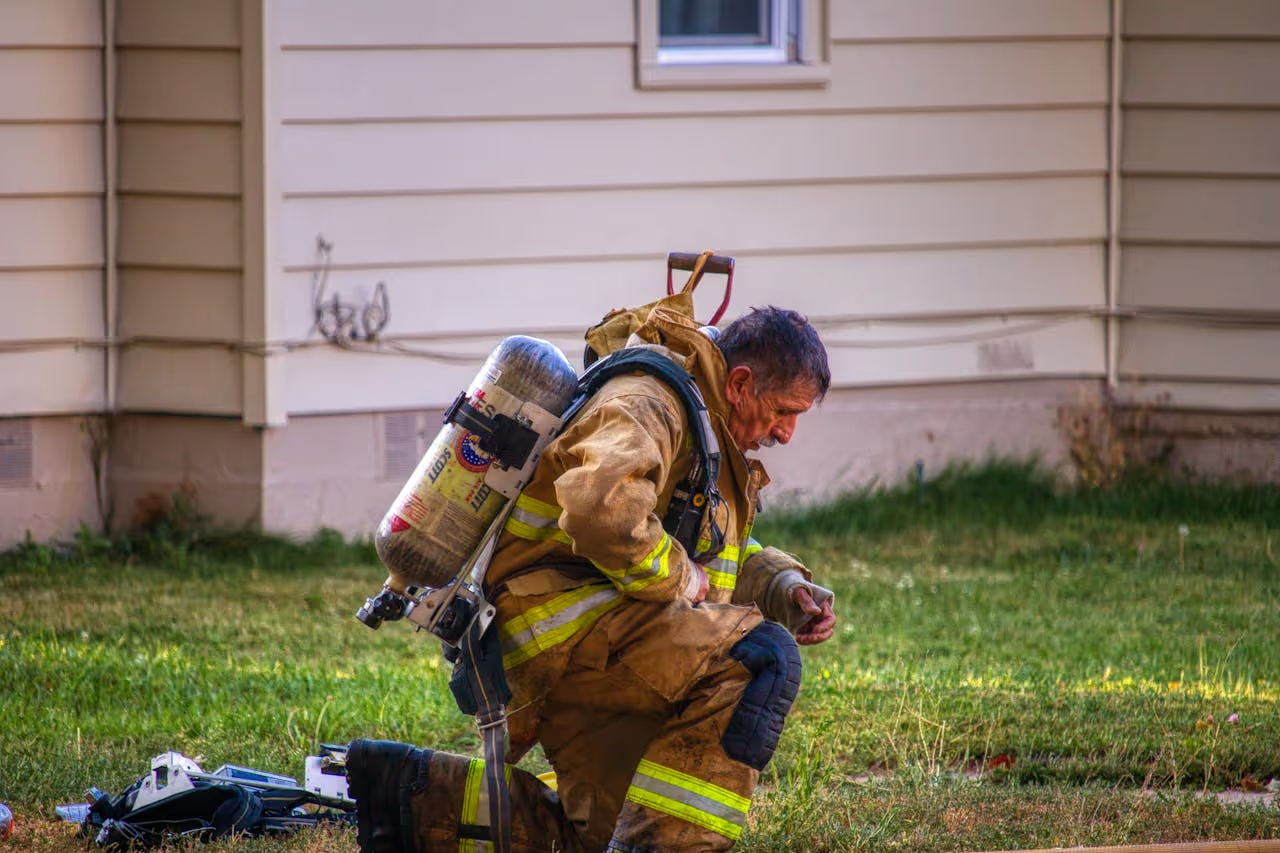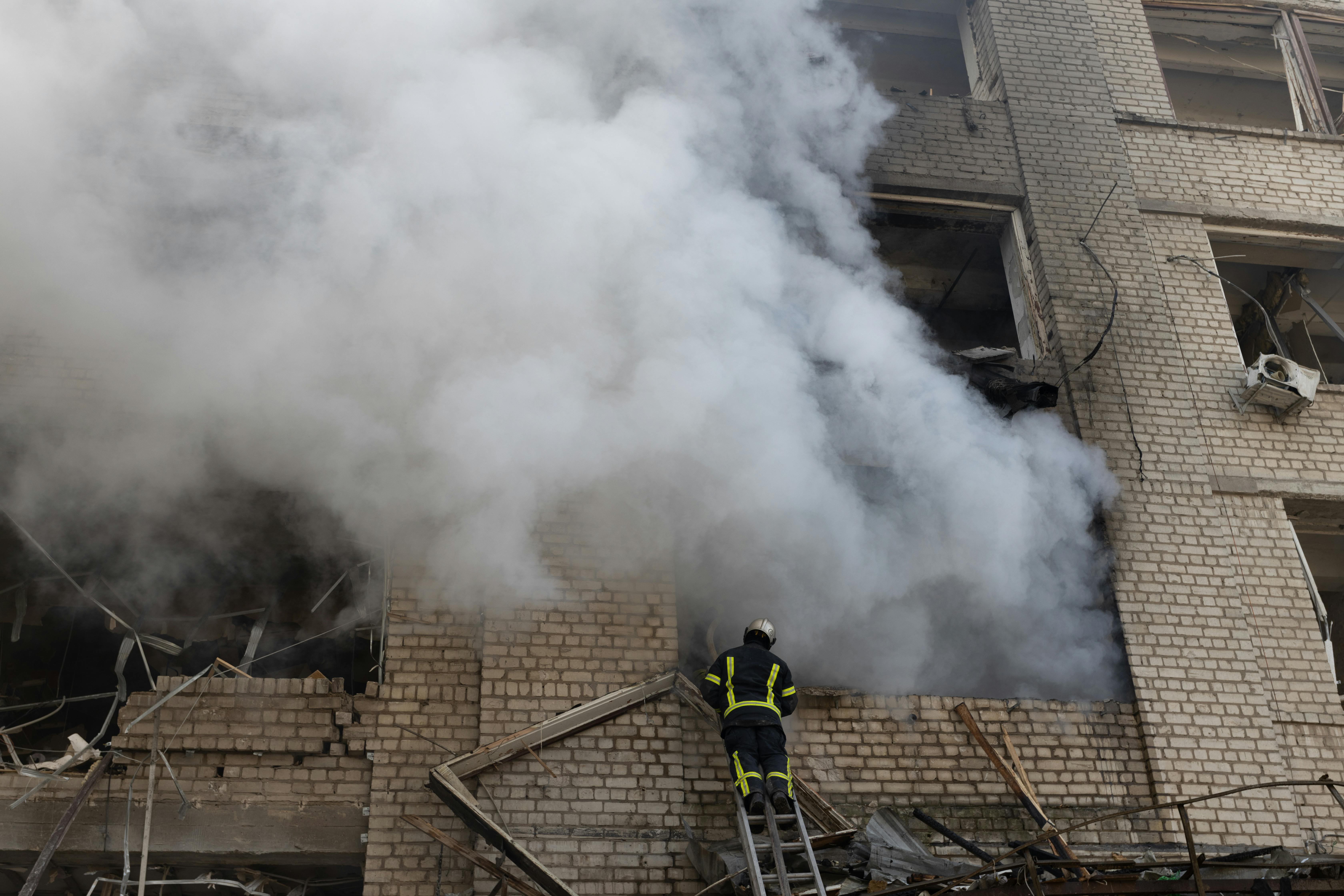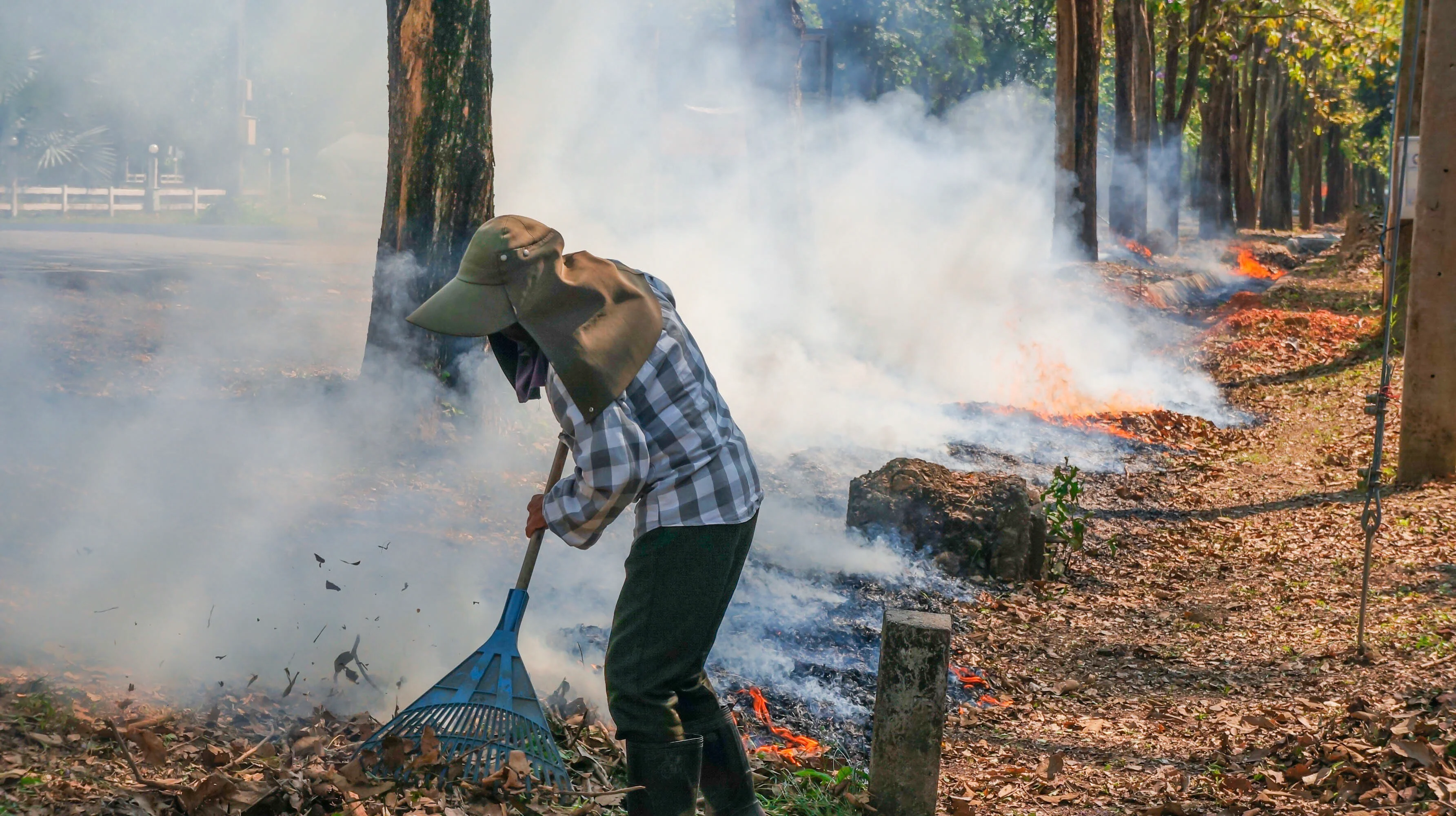The Ultimate Guide to Arson Investigation Tools and Equipment


Arson investigators have the important job of identifying the potential of arson, collecting and preparing evidence, and complying with laws and the court in the event of a criminal case. Arson investigation tools and equipment help professionals in the field solve complex cases and protect public safety.
There is a range of key tools used in an arson investigation, with each playing an important role in solving fire crimes and keeping our communities safe. Let’s take a look at the must-have items in every arson investigator’s toolbox.

Table of contents
- Must Have Arson Investigation Tools and EquipmentThere are a variety of tools and equipment that all arson investigators need to efficiently conduct investigations. Here’s a closer look at some of the most important ones.
- Specialized tools and equipment are essential for arson investigations. Arson investigation equipment allows fire investigators to properly collect and analyze evidence and document the crime scene according to protocol while ensuring the investigator's safety.
- Arson investigators use a number of specialized tools, including personal protective equipment (PPE) for safety, fire scene tool kits, cameras, sketching materials, and evidence markers, just to name a few.
- Advanced technologies have improved and streamlined arson investigations. Modern tools, including digital imaging, mapping software, and accelerant detection techniques, are essentials for modern arson investigators.
- Not all arson investigation tools are high-tech. Arson detection dogs and carbon monoxide detectors are still invaluable assets, allowing investigators to monitor air quality and better detect potential arson cases.
- Digital voice recorders help arson investigators accurately document on-the-scene observations, as well as accurately document evidence, including witness statements.
Must Have Arson Investigation Tools and Equipment
There are a variety of tools and equipment that all arson investigators need to efficiently conduct investigations. Here’s a closer look at some of the most important ones.
Arson investigators collect evidence at fire scenes to prove or disprove that a fire was started intentionally. They use specialized tools to document, collect, and store evidence without compromising its integrity.
Similar to other types of criminal investigations, ensuring evidence integrity is essential. If evidence is mishandled at any point between documentation and collection to its presentation in a criminal case, it may be “thrown out” and considered inadmissible in court.
This means that evidence collection and management at a fire scene can either make or break an arson case, which is why using the right arson investigation tools is critical to the job.
Crime Scene Documentation
Arson investigators have the important task of documenting the crime scene. In the case of fire, which is destructive by nature, crime scene documentation takes on extra challenges.
Debris, movement from other officials and witnesses at the site, and the changing nature of the scene due to elements outside of anyone’s control mean that arson investigations need to begin quickly to ensure thorough and accurate documentation
Crime scene documentation tools are relatively straightforward – think along the lines of photography equipment and sketching tools. While these tools appear simple, choosing equipment that meets today’s demands for quality and technology is important for effective and thorough documentation that can stand up if presented in court.

Photographic Equipment
A professional-grade DSLR camera is among the most important technologies used in arson investigation. Arson investigators must be skilled at taking technical photographs that offer the highest level of detail and clarity. Knowing which setting to use, how to adjust lighting, and how to capture even the most minute details in each image is critical for an arson investigation.
Only high-quality, professional-grade photography equipment are arson investigation tools that meet the demands of crime scene photography. The right photography equipment, along with knowing how to use it, allows arson investigators to produce images that are clear and accurately detailed to assist with the investigation and be admissible in court if needed.
Sketching Tools
Sketching tools are a staple in an arson investigator’s tool kit. Detail, accuracy, and clarity of detail are all critical for arson crime scene documentation. This requires a list of tools, including measuring tapes, graph paper, and sketching materials, among other common items.
Crime scene sketches must accurately represent the scene, which demands that arson investigators provide a comprehensive view of the scene through their sketches. The skill of crime scene sketching is important for several reasons, including its ability to provide an additional level of documentation at the scene.
A sketch drawn to scale, with respect to the spatial relationships of the scene, can offer a more accurate portrayal of the surroundings than photography alone can. Properly drawn sketches provide the necessary blueprint for crime scene analysis and reconstruction..
While arson investigators are required to fine-tune their crime scene sketching skills, having the right tools is essential. In addition to a sketch kit, having an all-in-one kit, like this Fire Scene Tool Kit, is important. This kit “includes a variety of items to assist in the collection of arson investigation evidence.” Plus, all items are contained in a plastic field case, making for easy transport to and from the scene.
Crime Scene Documentation Common Questions
What types of cameras are best suited for crime scene documentation?
The best camera for crime scene documentation is a DSLR (digital single lens reflex) camera. It should have at least twelve-megapixel image sensors, along with exposure settings that can be adjusted manually or programmed to meet the needs of photography for each individual fire scene. In certain cases, a thermal imaging camera may also be used.
How can photographs and videos be properly labeled and organized for future reference?
Properly labeling and organizing crime scene photos is critical for identifying and accessing evidence as needed later. Labeling and organization also add credibility and enable tracking as evidence moves through the chain of custody.
Photographs and videos should be labeled with a description of the item, the date the image was taken, and the location. There should also be a case number or identifier, along with the collector's name and identifying number,
What are the essential components of a crime scene sketch kit?
A fully stocked sketch kit should contain everything an arson investigator needs to create accurate sketches at the scene. This might include a sketch pad, a crime scene template if needed, a compass, a mechanical drafting pencil, a black felt tip marker, a protractor, a plastic ruler, and to-scale templates for sketching various elements of the scene.
Reporting
Arson investigators have to be meticulous in their reporting. A comprehensive fire investigation software can streamline the entire process from beginning to end, and ensure accuracy and compliance throughout.
Blazestack.com offers full-spectrum software solutions for fire reporting and arson investigations. With one software solution, arson investigators have access to customizable report templates, intelligent smart fields that can auto-populate data based on previously entered data, integrated case management tools, real-time collaboration with others, and seamless compliance.
Reporting software like Blaze Stack saves time, streamlines the reporting process, ensures accuracy, and promotes a more collaborative investigative environment.

Evidence Collection Tools
Specialized evidence collection tools allow arson investigators to perform their responsibilities thoroughly with accuracy and precision. The correct arson investigation equipment enables investigators to gather evidence from potential crime scenes while ensuring that integrity is not compromised as it travels through the chain of custody.
Gathering evidence without the proper fire investigation tools can create an unsafe environment and make it difficult to adapt to collecting different types of evidence. Additionally, professional evidence collection tools play an important role in ensuring that evidence integrity is not compromised or that it meets legal requirements.
We’ve broken down the most important arson evidence collection tools, starting with a comprehensive, professional fire investigation kit.
Fire Scene Tool Kit
When an arson investigator arrives on the scene, they’re never quite sure of the evidence they’re going to find. The evidence collection process can vary between sites, and having all the tools they could possibly need close at hand is essential to their job.
This is why arson investigators carry a fire scene tool kit with them. The kit is stocked with various types of tools for thoroughly collecting and preserving evidence.
Fire Scene Tool Kit Components:
Evidence Markers and Labels
In an arson investigation, all evidence must be clearly marked and labeled for identification at the scene. The importance of labeling evidence is multi-tiered. First, this step is essential for clearly identifying the evidence and documenting its location. Secondly, accurate labeling ensures evidence integrity throughout the chain of custody.
At each point that evidence changes hands, the potential for contamination or misplacement of identified information exists. When used properly, and with each piece of evidence, markers and labels mitigate these risks and work to ensure that evidence can be traced and is admissible in court.
Common Questions About Evidence Collection Tools
What are the essential components of a fire scene tool kit?
A fire scene tool kit used by arson investigators needs to contain tools that will allow them to collect evidence at a range of sites under investigation. Of course, there are basics such as fire line barrier tape to prevent others from compromising the scene, but a comprehensive field case will contain both manual and power tools for evidence collection.
A few examples of fire scene evidence collection tools include PPE, hammers, hacksaws, pliers, tongs, shovel, a cordless drill with a battery, and various drill bits.
How should evidence be properly packaged and labeled for transportation and analysis?
All evidence collected at a fire scene needs to be packaged in a sealed container, with seams being taped and initialed as applicable. The evidence should be labeled with a date, location, type, associated identification numbers, and the name or identifying number of the investigator who packaged it.
What safety precautions should be taken when collecting evidence at a fire scene?
Fire investigators should begin by marking off the area with line barrier tape, both to protect the scene and for the safety of others. Anyone gathering evidence at a fire scene is required to wear appropriate PPE, including a mask (if needed), goggles, and cloves. It’s also important to survey the surroundings for weaknesses in structures or other types of physical threats.
Arson investigators should also use caution when bringing equipment into the scene that may accidentally compromise the location. Chemicals, and even something as simple as a cough or sneeze can compromise evidence, meaning care must be taken on all levels.
Modern arson investigations benefit from technological advances that weren’t available in years past. New technology improves an investigator's ability to gather and effectively analyze evidence.
For arson investigators, staying up to date with the latest, most modern tools and techniques will enable them to solve complex cases more effectively and streamline the amount of manpower used in each investigation.

Fire Pattern Analysis
One of the most important areas of advancement in technology used for arson investigation is fire pattern analysis. Fire pattern, or burn pattern, is the trail that provides an arson investigator with clues and insights into how and where the fire began. Fire investigation procedures and techniques help investigators better understand complex issues, such as how fire dynamics or physics affect burn patterns and whether there is more than one point of origin for a fire.
For arson investigators, it’s also critical to identify any existing threats to their fire pattern analysis. Contamination of the scene, including the premature removal of evidence can significantly alter the course of an analysis.
The forensic side of fire pattern analysis is an interesting field, with new technology emerging to assist arson investigations. Using fire investigation case management software can ensure the accurate collection of evidence and details about the scene, along with smooth transitions and collaborations during an investigation.
Digital Imaging and Mapping
Digital imaging and mapping technologies have changed how modern arson investigations are carried out. Digital imaging tools, such as high-resolution digital cameras, drones, and 3D mapping software have changed how arson investigations take place.
With these tools, arson investigators are able to create a more comprehensive visual representation of the entire scene, and they’re able to do this with less time and resources than before.
Digital imaging and mapping technologies offer important benefits to the field of arson investigation. We’re seeing enhanced analysis capabilities that allow investigators to examine fire scenes with a higher, more accurate level of detail. The benefit of improved documentation accuracy is also a key element in establishing evidence credibility in criminal arson cases.
Accelerant Detection
In cases of arson, the use of fire accelerants is often involved. Fire accelerants are substances that either speed up the rate at which a fire spreads or are involved in the ignition of the fire at the point of origin. Identifying the presence of accelerants can help guide investigators into further exploring the possibility of arson.
Today, the field of arson investigation can benefit from techniques like GC-MS, which stands for gas chromatography-mass spectrometry. This process can identify even trace amounts of accelerants and ignitable fluids so that they can be analyzed as part of a fire investigation.
GC-MS is a highly reliable arson investigation tool, thanks in part to its sensitivity and specificity. Identifying with accuracy the type of accelerant used can become a key piece of evidence in an arson investigation.
Arson Investigation Technology Common Questions
What are the different types of fire patterns, and what do they indicate?
A fire pattern refers to the visible record of changes against materials as a result of a fire. Fires burn in very predictable patterns based on how, where, and why the fire started. The main types of fire patterns include v-patterns, hourglass patterns, inverted cones, u-shaped patterns, and circular.
For example, fire typically spreads in a v-pattern from the point of origin. Identifying a v-pattern can provide investigators with clues as to how and where the fire started. V-patterns are generally found on vertical surfaces. In contrast, a fire with a high point of origin on a ceiling is more likely to spread in a v-pattern in two directions from the point of origin, creating more of an hourglass shape.
How can digital imaging and mapping technologies enhance arson investigations?
Technologies such as digital imaging and mapping provide a more detailed and comprehensive view of a fire scene. Digital imaging from drones captures aerial images, providing deeper insights into the terrain and spatial relationships of the fire scene. These technologies are also incredibly useful for scene reconstruction and identifying evidence.
What are the most effective methods of detecting and identifying accelerants?
Gas-chromatography-mass-spectrometry (GC-MS) is currently thought of as one of the most effective tools for both detecting and identifying accelerants used in a case of arson. Photoionization detectors (PID) are also sensitive to even low levels of volatile compounds and are capable of detecting potentially hundreds of accelerants.
Arson investigators require specialized equipment that expands the tools used for evidence collection. These types of additional equipment can be helpful in streamlining the investigation process, along with keeping the investigators safe and mitigating the risk of evidence contamination, while gathering and analyzing evidence.
There’s a diverse range of equipment available to arson investigators including everything from personal protection gear and carbon monoxide detectors to arson detector dogs that are capable of detecting the smallest trace amounts of accelerants that other forms of arson investigation tools might miss.

Personal Protective Equipment (PPE)
The use of personal protective equipment (PPE) in arson investigations is essential, both to protect the integrity of the scene and evidence and to protect the diligent investigators who are working in the field.
Personal protective equipment (PPE) can include items such as fire-resistant full protective gear.
Protective gear, such as safety helmets, respiratory protection, and fire-resistant clothing that complies with NFPA 1321, helps ensure that arson investigators are protected from their potentially dangerous environments.
Whether it’s to protect the scene from outside contamination, or the important task of protecting fire workers, personal protection equipment (PPE) is essential for anyone investigating the scene of a fire.
Arson Detection Dogs
Arson detection dogs are sometimes deployed to handle tasks that humans or arson investigation equipment can’t. This isn’t to say that the dogs are placed in danger. Accelerant detection dogs receive more than two hundred hours of specialized training that allows them to perform their duties quickly, safely, and effectively.
Detection dogs are able to maneuver in spaces that might be too small or unsafe for a human to travel. Their keen sense guides them and protects them from potential dangers. These canines are trained to detect even the slightest trace amounts of fire accelerants and ignitable fluids, which ultimately helps investigators in identifying arson cases. Compared to other types of accelerant detection tools, detection dogs have an extremely low, or even non-existent, false positive rate.
Arson Detection Dog Capabilities:
Carbon Monoxide Detectors
Carbon monoxide detectors are an essential part of every fire investigator’s toolkit. They can pick up on trace amounts of this gas that’s produced during fires and warn workers and investigators when they are at risk of exposure to this harmful and potentially deadly gas.
Carbon monoxide detectors are an essential part of every fire investigator’s toolkit. They can pick up on trace amounts of this gas that’s produced during fires, and warn workers and investigators when they are at risk of exposure to this harmful and potentially deadly gas.
Digital Voice Recorders
Arson investigation is a hands-on process. Equipment, such as digital voice recorders, that allows investigators to document the scene and witness testimony in a hands-free way, allowing them more flexibility while accurately recording details, observations, and interviews is a huge benefit to the investigation process.
Reliable digital voice recorders take over the work of electronic data entry devices and note-taking. With a voice recorder in hand, there’s no reason to stop and dig out the right tools to collect audio evidence or make observations. The digital recordings are also valuable when cases are reviewed, and a legal investigation is taking place. In court, a digital voice recording of a witness can provide crucial evidence to help decide the case
Arson investigators have a diverse range of tools at their disposal to assist in evidence collection and documentation at the scene, as well as for recording data and observations for streamlined collaboration and ease of retrieval.
While emerging technology in the field of arson investigation is exciting and something to continually keep an eye on, we also don’t want to neglect the importance of more standard tools for arson investigation. Carbon monoxide detectors, PPE, and arson detection dogs are extremely valuable and will never become outdated.
Here are a few points to remember from this article:
- Proper crime scene documentation is critical. This includes everything from sketching and detailed photography to labeling and preserving evidence to protect its integrity and ensure it remains uncompromised as it moves through the chain of custody in an investigation.
- Every arson investigator should be equipped with a fire scene tool kit that contains all of the essentials of the job. Even the smallest details, like evidence markers, play a vital role in gathering physical evidence from the scene and properly preserving it for the investigation ahead.
- The field of arson investigation has seen some great advancements in technology. Fire investigators now have tools to assist in fire pattern analysis, digital imaging, and mapping, along with accelerant detection techniques. These new technologies have revolutionized how arson investigations take place and the level of evidence that is produced.
- It’s important not to overlook the value of not-so-new technology, like arson investigation dogs and personal protection equipment (PPE). These two items alone can help save the lives of fire workers and assist in gathering more reliable evidence.
- Digital voice recorders allow investigators to accurately document a fire scene in a way that is essentially hands-free. This includes making notes of observations and details and recording witness statements.
Improve Investigation Accuracy With the Right Arson Investigation Tools and Equipment
Arson investigators play a critical role or importance in arson investigations. Individuals in this field are responsible for observing, gathering, and protecting the integrity of evidence at the site of suspected arson. There is a range of tools and equipment that helps them perform their job at a high level of accuracy, including the many different tools we’ve mentioned here today. Arson investigation requires a level of expertise, dedication, and ethics. Their role in fire investigation helps to keep our communities safe.
Fire investigation recording software, like Blazestack, helps those in the field collect, organize, and collaborate their evidence in a more streamlined, efficient, and reliable way.
Related Blogs
Trusted by Public and Private Investigator Teams Everywhere
Whether you're a big state agency, a small local fire department or somewhere in between, Blazestack software (NFPA 921® & CJIS compliant) collects fire scene data and generates standardized origin and cause reports in a fraction of the time of other methods.
To learn more about Blazestack, give us a call at (866) 303-4344 or email us at support@blazestack.com
Get Your Free 14-Day Trial and Custom Price Quote Now
We'll let Blazestack do the talking. Try it out right now for free.
A member of our staff will be in touch shortly.


